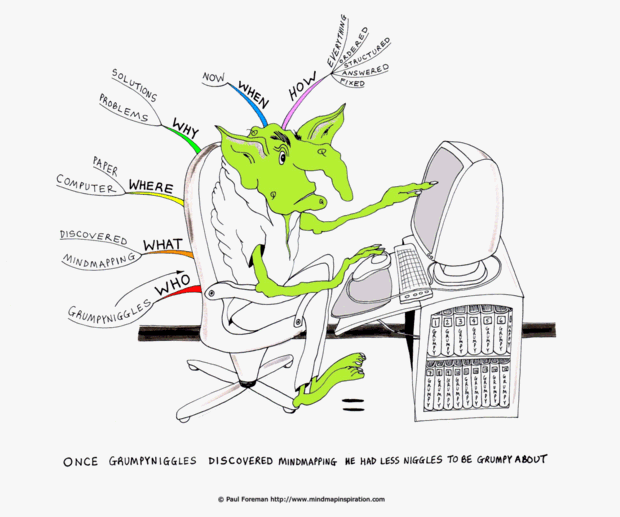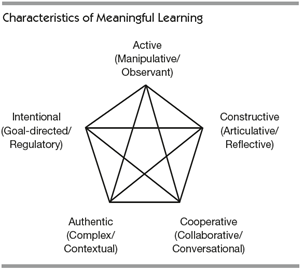CLIL and STEM in teaching
| Site: | Vitajte v prostredí e-learningu na Filozofickej fakulte PU |
| Course: | ELT: DASS Autonomy Development using ePortfolio |
| Book: | CLIL and STEM in teaching |
| Printed by: | Hosťovský používateľ |
| Date: | Monday, 15 December 2025, 8:28 PM |
1. Content Integration and meaningful teaching
 In this chapter you will learn more mainly about the possible integration of subjects
In this chapter you will learn more mainly about the possible integration of subjects
After going through this chapter, you will be able to
- to explain the concept CLIL and characterise content and language integrated learning
- to explain the concept STEM and characterise it
1.1. Revise and Think
 Before you
read the text:
Before you
read the text:
Revise: What are the principles of topic based teaching?
Think: Do you know the nursery rhyme/song London's burning? Do you know what the song is about? Do you know a story about the Great Fire of London (1666)? Would it be useful to explain kids what the song is about? Why?
1.2. Content integration - introduction
 Meaningful learning is one of the main principles of teaching. Along with the development of factual knowledge (procedural fluency) connected with conceptual understanding (see Fuson et al, 2005), it should be naturally applied in teaching. Learning, as a cyclical process transforming experiences and prior knowledge and building connections (Roberts, 2012), requires teachers who intentionally facilitate and support this process and organize the material "in a way to facilitate retrieval and problem solving (strategic competence)" (see Fuson et al, 2005).
Meaningful learning is one of the main principles of teaching. Along with the development of factual knowledge (procedural fluency) connected with conceptual understanding (see Fuson et al, 2005), it should be naturally applied in teaching. Learning, as a cyclical process transforming experiences and prior knowledge and building connections (Roberts, 2012), requires teachers who intentionally facilitate and support this process and organize the material "in a way to facilitate retrieval and problem solving (strategic competence)" (see Fuson et al, 2005).
In real life, we subconsciously integrate prior experience and knowledge from different areas. However, this is not always true about formal education, where subjects are often taught in isolation as discrete subprograms by different teachers, not leveraging the power of building a system of intertwining and interconnecting information that would support not only understanding but also promote critical and creative thinking, crucial, for example, in problem-solving.
The history of education has witnessed methods and approaches based on subject integration. We can mention, for example, Integrated Thematic Instruction, later transformed into the HET model (Highly Effective Teaching), content-based instruction (CBI), or content and language integrated learning (CLIL). Both CBI and CLIL deal with language and subject learning. It is probably CLIL that is, in its principles, most similar to STEM – the model integrating science, technology, engineering, and math.
1.3. CLIL and STEM
Integrated curriculum is realised by individuals rather than the school philosophy. Integration is not an easy step, it needs careful planning, discussions about the ways how to integrate each teacher’s curriculum what is sometimes connected with changes in timetable.
Content and language integrated learning has been in European schools for 30 years. CLIL refers to “dual-focused methodological approach that embraces both language and non-language content, focusing mainly on ‘meaning’” (Marsh 2002, p.65).
Recently, an interdisciplinary approach integrating science, technology, engineering and mathematics (STEM) is being intensively discussed. It is not only the reaction to “employer demand for STEM qualifications and skills” and job market change (What is STEM?) but it also aims to “improve how students comprehend and apply science” and make connections between the classroom and the world around them” (Roberts et al., 2018).
STEM is a subject of both, formal and informal education. The study focused on students’ perceptions of STEM learning (STEM Education). The authors claim that “informal STEM learning experiences have the potential to support students’ learning and engagement in a formal STEM learning environment” (p. 2). Their research showed that the use of project/problem-based learning allowed students to connect to real-world issues.
In the westerm countries the experimental studies have been recently conducted on integrated STEM and arts (STEAM).
1.4. Technologies and meaningful learning
integrated curriculum is realised by individuals rather than the school philosophy. Integration is not an easy step, it needs careful planning, discussions about the ways how to integrate each teacher’s curriculum what is sometimes connected with changes in timetable.
Content and language integrated learning has been in European schools for 30 years. CLIL refers to “dual-focused methodological approach that embraces both language and non-language content, focusing mainly on ‘meaning’” (Marsh 2002, p.65).
Recently, an interdisciplinary approach integrating science, technology, engineering and mathematics (STEM) is being intensively discussed. It is not only the reaction to “employer demand for STEM qualifications and skills” and job market change (What is STEM?) but it also aims to “improve how students comprehend and apply science” and make connections between the classroom and the world around them” (Roberts et al., 2018).
STEM is a subject of both, formal and informal education. The study focused on students’ perceptions of STEM learning (STEM Education). The authors claim that “informal STEM learning experiences have the potential to support students’ learning and engagement in a formal STEM learning environment” (p. 2). Their research showed that the use of project/problem-based learning allowed students to connect to real-world issues. In the westerm countries the experimental studies have been recently conducted on integrated STEM and arts (STEAM).
Subject or content Integration is often connected with authentic and meaningful learning. "In order for students to learn meaningfully, they must be willfully engaged in a meaningful task. In order for meaningful learning to occur, the task that students pursue should engage active, constructive, intentional, authentic, and cooperative activities. Rather than testing inert knowledge, schools should help students to learn how to recognize and solve problems, comprehend new phenomena, construct mental models of those phenomena, and, given a new situation, set goals and regulate their own learning (learn how to learn). In order to help students accomplish those goals, we have organized the book around meaningful learning activities, not technologies" (Howland, et al., 2014, p.2).
The authors define the following roles for technologies in supporting meaningful learning:
- Technology as tools to support knowledge construction:
o for representing learners’ ideas, understandings, and beliefs
o for producing organized, multimedia knowledge bases by learners
- Technology as information vehicle for exploring knowledge to support learning by constructing:
o for accessing needed information
o for comparing perspectives, beliefs, and worldviews
- Technology as authentic context to support learning by doing:
o for representing and simulating meaningful real-world problems, situations, and contexts
o for representing beliefs, perspectives, arguments, and stories of others
o for defining a safe, controllable problem space for student thinking
- Technology as social medium to support learning by conversing:
o for collaborating with others
o for discussing, arguing, and building consensus among members of a community
o for supporting discourse among knowledge-building communities
- Technology as intellectual partner (Jonassen, 2000a) to support learning by reflecting:
o for helping learners to articulate and represent what they know
o for reflecting on what they have learned and how they came to know it
o for supporting learners’ internal negotiations and meaning making
o for constructing personal representations of meaning
o for supporting mindful thinking
1.5. Meaningful learning
The following figure displays the characteristics of meaningful learning.

Figure Characteristics of meaningful learning (Source: Howland, et.al., 2014, p.3)
It is important to realise that educational technology should be not used as a repository or reproduction of a textbook but has to provide space for deeper learning, space for developing new skills and as Howland et al (2014) suggest we should think about technologies as support rather than a source, "as learning tools that students learn with, not from".
1.6. ISTE framework for innovation in education
International society for technology in education (ISTE) standards present a framework for innovation in education and formulate the principles that should be considered in decision to and how use technology in education. They formulate the educator standards (Learner, leader, citizen, collaborator, designer, facilitator and analyst), students standard (empowered learner, digital citizen, knowledge constructor, innovative designer, computational thinker, creative communicator, global collaborator) and education leader standards, coaching standards; and computational thinking standards.
1.7. ISTE standards
|
ISTE standards for learner |
|
1. Empowered Learner Students leverage technology to take an active role in choosing, achieving and demonstrating competency in their learning goals, informed by the learning sciences. Students:
|
|
2. Digital Citizen Students recognize the rights, responsibilities and opportunities of living, learning and working in an interconnected digital world, and they act and model in ways that are safe, legal and ethical. Students:
|